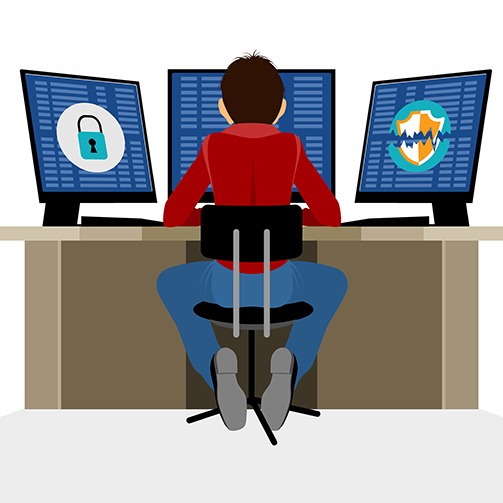
Modern networks and their components are constantly evolving, and with them, security does too. But when cybercriminals are becoming sophisticated enough to adopt damaging techniques – the threat is very real.
There are an estimated 15 billion devices now connected to the internet, and this number is expected to grow to 500 billion by 2030. Staggeringly, this has an estimated value of $19 trillion over the next 10 years. However, it also creates significant opportunities for cybercriminals. Financially motivated attackers are adopting increasingly sophisticated methods…they are difficult to detect. In fact, the industry believes it takes approximately 100 days to trace an advance security threat and could be attributed to the global cybercrime market being valued at $450 billion to $1 trillion.
The first generation of network security appliances has provided protection for more than a decade at this point, and organisations don’t have the resources to add components or staff to manage the complexity of such a modern age threat. In fact, resource constraints are the most commonly cited obstacle to adopting better security. In addition, these systems are brittle, inhibiting business growth due to operational inflexibility.
As innovations such as cloud computing, virtualisation, and mobility continue to change the way technology services are delivered, firewalls need to be able to provide an equally flexible mechanism of protecting important assets from attacks. At the same time, the threats faced by these same organisations have multiplied in both number and sophistication. Hackers today use advanced tactics to obscure their attacks, putting a premium on accurate and scalable network security.

Organisations need more from their firewall platforms. They need a next-generation firewall that:
- Focuses on threat effectiveness and provides protection across the entire attack continuum—before, during, and after an attack
- Fully integrates all the security services and event information into a single view and management platform
- Integrates with existing security investments to provide a sum greater than its parts
Today’s hackers continue to increase their capabilities faster than the defences deployed to stop them. Whether it’s increasingly obscuring their attacks or hiding malicious code within webpages and other files, it’s more and more difficult to profile and identify legitimate network traffic. The situation is likely to get worse before it gets better. Hackers now utilise agile development and testing approaches to ensure their malware will evade the majority of network security devices deployed to prevent such attacks.

What is needed is a next-generation firewall that delivers real-world security effectiveness against the threats posed by sophisticated and evasive malware attacks. It allows organisations to streamline operations and to get more from their networks.
Next-generation network security devices have emerged that provide not only granular access control but also multi-layer threat protection in a single device for comprehensive contextual awareness and more in-depth analysis of network traffic. Complete contextual awareness, combined with security automation, provides the visibility and agility necessary to keep pace with today’s fluid IT environment, increasing network speeds, and sophisticated threats.
With next-generation network security devices that provide an integrated approach to threat defence, the tools are now available to address increasingly advanced attacks in a single view and management platform. Not only do enterprises gain better protection across the full attack continuum—before, during, and after an attack—but they are also able to make greater use of existing security investments.
The success of any hacker hinges on their ability to evade defences. There are a number of techniques hackers currently employ that make it very difficult to detect and block attacks. To thwart this, security threat inspection and enforcement must also occur deeper in the network, including within the core data centre where 10-Gbps connections are commonplace.
There is an increasing need to:
- Gain More Insight
- Detect Earlier and Act Faster
- Reduce Complexity and Simplify Operations
- Strengthening Features
And when it comes to scalability, the only thing you can count on is that tomorrow’s devices and networks will have more capabilities and performance than are currently available. Given the sophistication of the attacks, network security capabilities need to keep pace, requiring line-rate inspection on purpose-built devices. That’s the only way to turn the tide against the attackers.
Finally, any next-generation network security platform needs to be enterprise class. That means more than just scaling to the performance and fault-tolerance demands of your environment. It means you can centrally manage security policies across all enforcement points, support a variety of security functions (firewall, IPS, malware detection) and provide an open environment to integrate with existing systems.
by Michael Sibley
